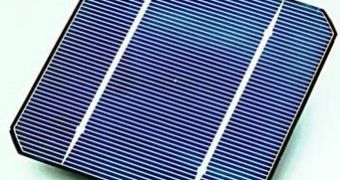A newly-formed company is trying to revolutionize the way people look at solar energy by reducing the costs involved with mass-producing commercially-sustainable solar cells that could supply the population with electrical energy valued at less than a dollar per watt. 1366 Technologies, based in Lexington, Massachusetts, aims at accomplishing that not by new inventions and production techniques, but by reducing the costs associated with solar energy production.
The company also invented a novel way of re-trapping light, so that solar radiation that is reflected off the panels could be reused for more electrical outputs. Ely Sachs, a professor at the Massachusetts Institute of Technology (MIT), plans to use the discoveries he made in terms of solar cell efficiency to further the progress of the company. He is currently occupying the chief technology officer position at 1366 Technologies.
Though the company only numbers 20 employees, it has already opened a pilot production plant in Lexington on Thursday. The new plant, which is almost entirely equipped with robots, will produce new solar cells to be distributed among solar panel manufacturers. Frank van Mierlo, the president of the company, said that one of the patents has already been sold to other cell producers. The patent consists of a new way to build solar cells, which involves placing a "grooved ribbon" underneath the cell, so that the light is reflected twice on the surface, instead of only once.
Until now, 1366 Technologies gathered over $12 million in funding for its projects. Van Mierlo hopes to attract some $50 million more, so that all four patents the company is working on right now could be completed as soon as possible. One of these patents advocates the use of copper wiring instead of silver one, for better electrical conductivity along the circuits.
Future plans for the company include the construction of a much larger production plant by 2010, with the express purpose of supplying electrical energy with a lower cost than that extracted from fossil fuels. Van Mierlo says that 2015 is a deadline for this plan, if the company manages to get a head start over the competitors. "In this industry, either you grow quickly or you will not be relevant," he concluded.

 14 DAY TRIAL //
14 DAY TRIAL //